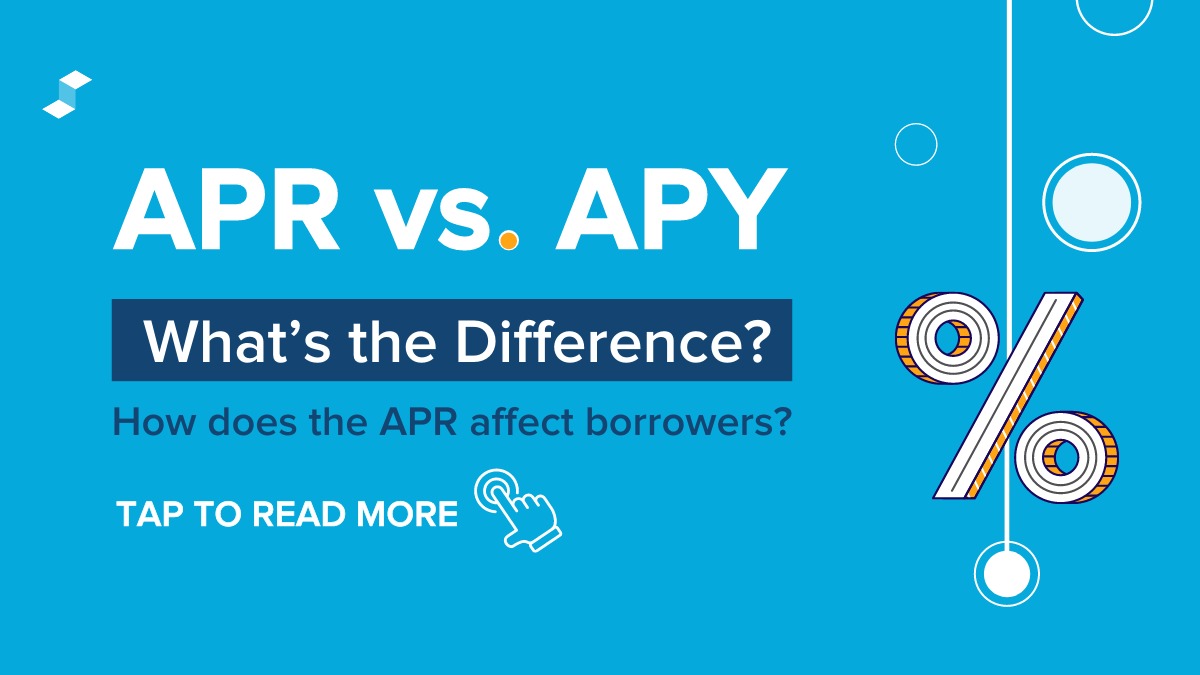Home>Finance>What Is The Difference Between Individual And Group Insurance


Finance
What Is The Difference Between Individual And Group Insurance
Published: November 21, 2023
Learn the key distinctions between individual and group insurance in finance. Find out which option suits your needs and budget.
(Many of the links in this article redirect to a specific reviewed product. Your purchase of these products through affiliate links helps to generate commission for LiveWell, at no extra cost. Learn more)
Table of Contents
- Introduction
- Definition of Individual Insurance
- Definition of Group Insurance
- Comparison of Individual and Group Insurance
- Coverage Options in Individual Insurance
- Coverage Options in Group Insurance
- Premiums in Individual Insurance
- Premiums in Group Insurance
- Eligibility Criteria for Individual Insurance
- Eligibility Criteria for Group Insurance
- Claim Process in Individual Insurance
- Claim Process in Group Insurance
- Advantages of Individual Insurance
- Advantages of Group Insurance
- Disadvantages of Individual Insurance
- Disadvantages of Group Insurance
- Factors to Consider in Choosing between Individual and Group Insurance
- Conclusion
Introduction
When it comes to insurance, there are various options available to individuals and businesses. Two popular types of insurance are individual insurance and group insurance. While they both provide coverage and protection, there are significant differences between the two. Understanding these differences can help individuals and businesses make informed decisions about the type of insurance that best suits their needs.
Individual insurance, as the name suggests, is insurance that is purchased by an individual to provide coverage for themselves and their dependents. It is a policy that is tailored specifically to the needs and circumstances of the individual. On the other hand, group insurance is a policy that is purchased by a group, such as an employer, association, or organization, to provide coverage for a group of individuals who belong to that group.
The main difference between individual insurance and group insurance lies in their structure and scope of coverage. Individual insurance is personalized and offers coverage to an individual and their family members. It is typically obtained by individuals who are self-employed, do not have access to employer-provided insurance, or prefer the flexibility and control that individual insurance offers. Group insurance, on the other hand, provides coverage to a group of individuals who meet certain criteria, such as being employees of a particular company or members of a specific organization.
In this article, we will explore the differences between individual insurance and group insurance, including their coverage options, premiums, eligibility criteria, claim process, advantages, disadvantages, and factors to consider when choosing between the two types of insurance.
Definition of Individual Insurance
Individual insurance refers to an insurance policy that is purchased by an individual to provide coverage for themselves and their dependents. It is a type of insurance that is personalized and tailored to the specific needs and circumstances of the individual.
Individual insurance provides coverage for a wide range of risks and events, such as medical expenses, disability, life insurance, homeowners’ insurance, and auto insurance. Individuals have the flexibility to choose the specific types of coverage they need based on their lifestyle, financial situation, and risk tolerance.
One of the key features of individual insurance is that it is not tied to employment or membership in a particular group. Individuals can purchase individual insurance policies directly from insurance companies or through insurance agents/brokers. They have the freedom to select the insurance provider, policy terms, coverage limits, and deductibles that best meet their needs.
Individual health insurance is a specific type of individual insurance that provides coverage for medical expenses, including doctor visits, hospitalization, prescription medications, and preventive care. It is particularly important for individuals who do not have access to employer-provided health insurance or government-funded health insurance programs.
Individual insurance policies may be renewable annually or for longer terms, depending on the type of coverage. Policyholders typically pay monthly or annual premiums to maintain coverage, and in the event of a claim, the insurance company will provide financial reimbursement for eligible expenses as per the terms and conditions of the policy.
Individual insurance offers several advantages for policyholders. It provides a higher level of control and flexibility compared to group insurance, allowing individuals to customize their coverage based on their unique needs. Policyholders have the freedom to choose their preferred healthcare providers, hospitals, and specialists, giving them more autonomy in managing their healthcare. Additionally, individual insurance policies are portable, meaning that individuals can take their coverage with them if they switch jobs or move to a different location.
While individual insurance offers many benefits, it is important for individuals to carefully assess their needs and budget when selecting a policy. Considerations such as coverage limits, deductibles, copayments, and exclusions should be thoroughly evaluated to ensure that the insurance policy provides adequate protection and meets the individual’s financial requirements.
Definition of Group Insurance
Group insurance refers to an insurance policy that is purchased by a group, such as an employer, association, or organization, to provide coverage for a group of individuals who belong to that group. It is a type of insurance that offers coverage to a collective group of people rather than just an individual.
The purpose of group insurance is to provide a shared level of coverage and protection to all eligible members within the group. It is often offered as a part of an employee benefits package, with the employer being the policyholder and the employees being the insured individuals. However, group insurance can also be offered through professional associations, unions, or other organized groups.
Group insurance policies typically include coverage options such as health insurance, life insurance, disability insurance, dental insurance, and vision insurance. The specific types of coverage offered within a group insurance policy may vary based on the needs and preferences of the group.
One of the key advantages of group insurance is that it can provide broader coverage at a lower cost compared to individual insurance. Because the risk is spread over a larger group of individuals, the insurance premiums are typically lower, making group insurance more affordable for individuals who may not be able to afford individual insurance on their own.
In a group insurance policy, the premiums are usually paid partially or fully by the employer or the group itself, with the individual members sometimes also contributing a portion of the premium through payroll deductions or other means. The cost-sharing nature of group insurance helps to make coverage more accessible and affordable for members.
Group insurance policies often come with standardized coverage terms and conditions for all members of the group, providing a level of consistency and simplicity. However, there may be options for individuals to customize their coverage within certain limits, such as selecting different levels of coverage for certain benefits or adding on supplemental coverage.
Group insurance offers several advantages for both employers and employees. For employers, offering group insurance can be an attractive perk to attract and retain talented employees, as it provides a comprehensive benefits package. For employees, group insurance provides a convenient way to obtain essential coverage at a lower cost compared to purchasing individual insurance.
It is important to note that group insurance coverage typically ends when an individual leaves the group, such as when an employee changes jobs or retires. However, there may be options for individuals to convert their group coverage into individual coverage or to continue coverage through alternate means.
Overall, group insurance is a valuable option for groups of individuals seeking comprehensive coverage at an affordable cost. It provides a sense of security and protection for members, allowing them to access necessary healthcare services and other essential benefits with ease.
Comparison of Individual and Group Insurance
Individual insurance and group insurance are two distinct types of insurance policies that offer coverage for individuals and groups, respectively. Let’s compare the key features of these two types of insurance to help you understand their differences:
Structure and Scope of Coverage:
Individual insurance is personalized and provides coverage for an individual and their dependents. It can include various types of coverage, such as health insurance, life insurance, auto insurance, and homeowners’ insurance. Group insurance, on the other hand, provides coverage for a group of individuals who meet certain criteria, such as being employees of a specific company or members of an organization. The scope of coverage in group insurance is typically more standardized and may include options such as health insurance, life insurance, and disability insurance.
Flexibility and Control:
Individual insurance offers a higher level of flexibility and control compared to group insurance. With individual insurance, an individual has the freedom to choose the insurance provider, policy terms, coverage limits, and deductibles that suit their specific needs. They also have the flexibility to customize their coverage based on their lifestyle and preferences. In contrast, group insurance is more standardized and often predetermined by the policyholder, such as an employer. This means that individuals in a group insurance policy have limited control over the specific coverage options and terms.
Cost and Premiums:
Individual insurance premiums are typically based on an individual’s specific risk factors and coverage needs. The cost of individual insurance can vary greatly based on factors such as age, health status, occupation, and lifestyle. Group insurance, on the other hand, pools the risk of a larger group, which often leads to lower premiums compared to individual insurance. The cost of group insurance is typically shared between the policyholder (e.g., employer) and the insured individuals, with the employer often subsidizing a portion of the premiums.
Eligibility:
Individual insurance can be obtained by anyone who meets the requirements set by the insurance provider. It is particularly beneficial for individuals who are self-employed, do not have access to employer-provided insurance, or prefer the flexibility of individual coverage. Group insurance, on the other hand, requires individuals to belong to a specific group, such as being employed by a particular company or being a member of an organization. Eligibility for group insurance is typically determined by the policyholder.
Claim Process:
Individual insurance claims are submitted directly by the insured individual to the insurance company. The individual is responsible for coordinating the claim process and providing the necessary documentation. In group insurance, the claims process is often managed by the policyholder, such as an employer or an insurance administrator. The insured individuals usually submit their claims to the policyholder or follow a specific process outlined by the group insurance policy.
Portability:
Individual insurance is portable, meaning that an individual can maintain their coverage even if they change jobs or move to a different location. This provides individuals with more flexibility and continuity in their insurance coverage. Group insurance, on the other hand, is typically tied to the group affiliation. When an individual leaves the group, their group insurance coverage typically ends, although there may be options to convert the coverage to individual insurance or continue coverage through other means.
Understanding the differences between individual insurance and group insurance can help individuals and businesses make informed decisions about the type of coverage that best meets their needs. Whether opting for individual insurance or group insurance, it is essential to carefully evaluate the coverage options, costs, and eligibility criteria to ensure adequate protection and financial security.
Coverage Options in Individual Insurance
Individual insurance offers a wide range of coverage options to meet the unique needs of individuals and their families. Here are some common coverage options available in individual insurance policies:
Health Insurance: One of the most important coverage options in individual insurance is health insurance. It provides coverage for medical expenses, including doctor visits, hospitalization, prescription medications, and preventive care. Health insurance plans can vary in terms of coverage levels, deductibles, copayments, and network providers. Some health insurance plans may also offer additional benefits such as dental and vision coverage.
Life Insurance: Life insurance provides financial protection to the designated beneficiaries in the event of the policyholder’s death. It can help support loved ones by providing funds for funeral expenses, mortgage payments, education, and other financial obligations. There are different types of life insurance policies, including term life insurance, whole life insurance, and universal life insurance, each offering various benefits and coverage terms.
Disability Insurance: Disability insurance offers income replacement if an individual becomes unable to work due to a disability. It provides a predetermined percentage of the individual’s income to help cover living expenses during the disability period. Disability insurance can be short-term or long-term, depending on the policy and the duration of coverage needed.
Auto Insurance: Auto insurance provides coverage for damages or injuries resulting from auto accidents. It typically includes liability coverage, which covers the cost of damages to other people’s property or injuries to others in an accident caused by the insured individual. Other coverage options, such as collision coverage and comprehensive coverage, may also be available to protect the insured vehicle against damage or loss.
Homeowners’ Insurance: Homeowners’ insurance provides coverage for the structure of the home and its contents. It protects against damages caused by perils such as fire, theft, vandalism, and natural disasters. Homeowners’ insurance may also include liability coverage to protect the homeowner in case someone is injured on their property.
Renters’ Insurance: Renters’ insurance is similar to homeowners’ insurance but is specifically designed for those who rent their homes. It provides coverage for personal belongings, liability protection, and additional living expenses in case the rented property becomes uninhabitable due to a covered event.
Other Coverage Options: Individual insurance policies may offer additional coverage options, such as liability insurance, umbrella insurance, travel insurance, pet insurance, and more. These options allow individuals to customize their insurance coverage based on their specific needs and priorities.
It is essential for individuals to carefully review and understand the coverage options and policy terms when selecting an individual insurance plan. Assessing one’s specific needs, considering potential risks, and evaluating the cost and affordability are crucial steps in choosing the right coverage options within an individual insurance policy.
Coverage Options in Group Insurance
Group insurance provides coverage options to a collective group of individuals who meet certain criteria, such as being employees of a specific company or members of a particular organization. Here are some common coverage options available in group insurance policies:
Health Insurance: Health insurance is one of the primary coverage options offered in group insurance. It provides coverage for medical expenses, including doctor visits, hospitalization, prescription medications, and preventive care. Group health insurance plans typically offer a range of coverage options and benefit levels, including different tiers of coverage such as basic, mid-level, and comprehensive plans. The specific coverage details and network providers may vary based on the insurance carrier and the terms negotiated by the group policyholder.
Life Insurance: Many group insurance plans include life insurance coverage as part of the benefits package. This coverage provides a death benefit to the beneficiaries in the event of the insured individual’s death. Group life insurance policies may offer a fixed amount of coverage or coverage based on the individual’s salary or position within the group. The amount of coverage provided may depend on factors such as years of service or employment status.
Disability Insurance: Group disability insurance offers income replacement if an individual becomes unable to work due to a disability. It provides a percentage of the individual’s income as an ongoing benefit during the disability period. Group disability insurance can be short-term or long-term, depending on the policy terms and the duration of coverage needed.
Dental Insurance: Dental insurance is another common coverage option in group insurance. It provides coverage for preventive care, basic dental procedures, and major dental treatments. Group dental insurance plans often offer a network of dentists and specific coverage limits for different types of dental services.
Vision Insurance: Group vision insurance offers coverage for eye exams, prescription eyewear, and other vision-related expenses. It may include coverage for routine eye exams, contact lenses, eyeglasses, and discounts on refractive surgeries. Group vision insurance is designed to support individuals in maintaining optimal eye health and correcting vision issues.
Other Coverage Options: Group insurance policies may also include additional coverage options such as accidental death and dismemberment (AD&D) insurance, supplemental health benefits, wellness programs, and employee assistance programs (EAPs). These additional coverage options can provide further support and protection for individuals within the group.
Group insurance aims to provide comprehensive coverage options for the members of the group. It is important for individuals to review the available coverage options, understand the policy terms and conditions, and consider their specific needs and priorities when making decisions about group insurance coverage. Individuals should also keep in mind that the coverage options in group insurance may be determined by the group policyholder, such as the employer, and may have limited customization compared to individual insurance policies.
Premiums in Individual Insurance
Premiums are a crucial aspect of individual insurance as they determine the cost of coverage. Individual insurance premiums can vary depending on several factors. Here are some key considerations related to premiums in individual insurance:
Factors Affecting Premiums:
The premium for individual insurance is influenced by various factors, including age, health status, occupation, lifestyle, location, coverage limits, deductible levels, and the type of coverage selected. For instance, younger individuals generally pay lower premiums compared to older individuals as they are considered to be at a lower risk of health-related issues. Non-smokers may also pay lower premiums compared to smokers due to the associated health risks. Additionally, certain occupations that involve higher risks, such as hazardous work environments, may result in higher premiums. Insurance providers assess these factors to determine the level of risk associated with insuring an individual and subsequently calculate the premium.
Premium Payment Options:
Individual insurance premiums can generally be paid in several ways, such as on a monthly, quarterly, semi-annual, or annual basis. The payment options may vary depending on the insurance provider and the specific policy. Some individuals may prefer to pay their premiums monthly for better budgeting, while others may choose to pay annually for convenience or to potentially receive a discount for a lump-sum payment.
Premium Determination:
Insurance providers use actuarial data and statistical models to determine individual insurance premiums. They evaluate the risk factors associated with the insured individual and assess the potential cost of claims based on historical data. Premiums are calculated to ensure that the insurance company can cover claims and administrative costs while still making a profit.
Policy and Coverage Adjustments:
Individual insurance premiums may be subject to adjustments over time. Insurance providers periodically review policy rates to account for inflation, changes in the insured individual’s age or health status, or other factors that may affect the risk level. Additionally, individuals may have the option to adjust their coverage limits or deductibles, which can impact the premium amount. It is essential to review the policy terms and conditions to understand any potential premium adjustments or options for policy changes.
Importance of Comparing Premiums:
Comparing premiums from different insurance providers is crucial to ensure that individuals obtain the most cost-effective coverage that meets their needs. Obtaining multiple quotes and evaluating the coverage and premiums offered by different providers can help individuals find the best value for their insurance premiums.
Tax Implications for Premiums:
In some cases, individual insurance premiums may be tax-deductible. Depending on the jurisdiction and specific circumstances, individuals may be eligible to claim a tax deduction for qualifying medical and health insurance premiums. It is advisable to consult with a tax professional or review applicable tax regulations to understand any potential tax benefits related to individual insurance premiums.
Understanding the factors influencing premiums and considering coverage options and costs are important steps in selecting individual insurance. By assessing their specific needs, budget, and risk tolerance, individuals can make informed decisions about the appropriate level of coverage and the associated premium amounts.
Premiums in Group Insurance
Premiums play a significant role in group insurance as they determine the cost of coverage for the individuals within the group. Here are some key points to consider regarding premiums in group insurance:
Shared Cost:
In group insurance, the cost of premiums is usually shared between the policyholder, often the employer, and the insured individuals. Employers often subsidize a portion of the premiums as part of the employee benefits package. The specific cost-sharing arrangement may vary depending on the group policy and the agreement between the policyholder and the individuals.
Group Purchasing Power:
One of the advantages of group insurance is that it leverages the purchasing power of a large group. Since the risk is spread across a larger pool of individuals, group insurance premiums tend to be lower compared to individual insurance. This can make coverage more affordable for individuals who may not be able to afford individual insurance on their own.
Rating Factors:
The factors that determine group insurance premiums may vary depending on the insurance carrier and the policy terms. However, some common rating factors include the size and demographics of the group, industry or occupation, and the claims experience of the group. Insurance providers assess these factors to determine the level of risk associated with insuring the group and subsequently calculate the group premium.
Standardized Premiums:
Group insurance typically offers standardized premium rates for all individuals within the group. This means that individuals within the group generally pay the same premium amount for a particular level of coverage, regardless of their age or health status. The group premium rates are determined based on the risk profile of the entire group rather than on an individual basis.
Renewal and Adjustments:
Group insurance policies are typically renewed on an annual basis. At the time of renewal, the insurance carrier may conduct a review of the group’s claims experience and demographic changes. This review may result in adjustments to the group premium rates for the upcoming policy period. It is important for the policyholder to communicate any changes in the group to the insurance carrier to ensure accurate premium calculations.
Cost Control Measures:
Employers and group policyholders may implement cost control measures to manage group insurance premiums. These measures can include implementing wellness programs, offering health promotion initiatives, or modifying the coverage options. By actively managing the health and well-being of the group members, the policyholder can help control healthcare costs and potentially reduce premiums over time.
Comparing Premiums:
While group insurance premiums are generally determined based on the group’s characteristics, it is still important for the policyholder to compare premium rates offered by different insurance carriers. Comparing premiums can ensure that the group is receiving the most competitive pricing for the desired coverage. Working with an insurance broker or consultant can assist in the process of comparing premiums and selecting the most suitable group insurance plan.
Understanding premiums in group insurance can help both employers and individuals make informed decisions about coverage and cost-sharing. By assessing the specific needs of the group, comparing premium rates, and implementing cost control measures, it is possible to provide comprehensive coverage at an affordable cost within the group insurance context.
Eligibility Criteria for Individual Insurance
Individual insurance policies have specific eligibility criteria that individuals must meet in order to obtain coverage. While the exact criteria may vary depending on the insurance provider and the type of coverage, here are some common factors considered in determining eligibility for individual insurance:
Age:
Insurance providers often have minimum and maximum age requirements for individual insurance policies. Some policies may have a minimum age requirement, typically 18 years old or older, to ensure that individuals have reached the legal age of responsibility. There may also be maximum age limits, particularly for certain types of coverage such as life insurance or long-term care insurance, where eligibility decreases or becomes more expensive as individuals get older.
Health Status:
Health status is a key factor in determining eligibility for individual health insurance coverage. Insurance providers typically ask applicants to complete a health questionnaire or undergo a medical underwriting process to assess their health and potential risk factors. Pre-existing medical conditions may affect eligibility, coverage options, or premium rates. However, it’s important to note that regulations and requirements for pre-existing conditions may vary by country and insurance market.
Occupation:
Some individual insurance policies, such as disability insurance or high-risk coverage, may have occupational requirements. These policies may involve occupations that are more prone to accidents or physical risks, such as hazardous work environments. Insurance providers may have specific criteria and premium rates based on the occupational risk associated with certain professions.
Lifestyle Factors:
Individuals’ lifestyle factors, such as smoking status or participation in high-risk activities, can impact eligibility for certain types of insurance coverage. Smoking, for example, can increase the risk of health issues and may result in higher premiums or limited coverage options. Participation in extreme sports or dangerous activities may also affect eligibility or require additional specialized coverage.
Residency and Citizenship:
Insurance providers may require individuals to be legal residents or citizens of the country in which they are seeking insurance coverage. Proof of residency or citizenship, such as a driver’s license or passport, may be required during the application process. Non-citizens or individuals from specific immigration statuses may have different eligibility requirements or availability of coverage options.
Policy Restrictions:
Insurance providers may place certain restrictions on coverage based on the insured individual’s medical history, age, or other factors. For example, they may exclude coverage for certain pre-existing conditions, impose waiting periods for specific benefits, or limit coverage for certain treatments or procedures.
It is important for individuals to carefully review the eligibility criteria outlined by insurance providers when considering individual insurance. Each insurance company may have its own specific requirements and guidelines for eligibility. Consulting with insurance agents or brokers can help individuals navigate the eligibility requirements and find the most suitable coverage options based on their individual circumstances.
Eligibility Criteria for Group Insurance
Group insurance provides coverage to a collective group of individuals who meet specific eligibility criteria. The criteria for eligibility in group insurance can vary depending on the policyholder, such as an employer or organization, and the type of coverage. Here are some common factors considered in determining eligibility for group insurance:
Employment Status:
Employment status is one of the primary factors for eligibility in group insurance. Most commonly, group insurance coverage is offered as part of an employee benefits package. Therefore, individuals who are employed by the policyholder or organization are typically eligible to participate in the group insurance plan. The specific requirements may include working a minimum number of hours per week or being classified as a full-time employee.
Waiting Periods:
Group insurance policies may have waiting periods before an individual becomes eligible for coverage. Waiting periods are typically used to prevent individuals from enrolling in the group insurance plan solely for the purpose of accessing immediate medical care or coverage for pre-existing conditions. Waiting periods can vary but are usually a fixed period of time, such as 30 days or 90 days, from the date of eligibility or employment start date.
Membership in an Organization:
Some group insurance policies extend coverage to members of specific organizations, unions, or associations. These organizations may negotiate group insurance plans on behalf of their members, providing access to coverage at group rates. Eligibility for the group insurance plan may require individuals to be active members of the organization or meet specific criteria set by the organization.
Dependent Coverage:
Group insurance often allows for coverage of dependents, such as spouses and children, in addition to the eligible employee. The eligibility criteria for dependents may vary based on the policyholder’s guidelines. Spouses may need to provide proof of marriage, and children may need to meet age limitations (e.g., under 26 years old) or other criteria set by the policyholder.
Union Membership:
In certain cases, group insurance coverage may be offered to individuals who are members of a specific labor union. The eligibility criteria for group insurance through a union typically involve union membership and may have additional requirements determined by the union and the insurance provider.
Other Organizational Affiliations:
Group insurance may be available to individuals who are affiliated with specific professional associations, trade organizations, or alumni groups. These affiliations can provide access to group insurance plans negotiated on behalf of the members. Eligibility criteria may vary depending on the policies and agreements between the organization and the insurance provider.
It is important for individuals to consult with the policyholder, human resources department, or insurance administrator to understand the specific eligibility criteria for group insurance. Being aware of the requirements and understanding any waiting periods will help individuals make informed decisions and take advantage of the benefits provided through group insurance coverage.
Claim Process in Individual Insurance
The claim process is an essential aspect of individual insurance, as it allows policyholders to seek reimbursement for eligible expenses covered by their insurance policy. Here are the key steps involved in the claim process for individual insurance:
Filing a Claim:
The first step in the claim process is to file a claim with the insurance company. This typically involves submitting a claim form provided by the insurer, which may require details about the insured individual, the policy number, the nature of the claim, and supporting documentation such as medical bills or receipts.
Documentation and Supporting Evidence:
Along with the claim form, policyholders are usually required to provide supporting documentation to validate the claim. This may include medical reports, hospital or pharmacy invoices, receipts for prescribed medications or treatments, and any other relevant documents that substantiate the claim. It’s essential to keep copies of all submitted documents for personal records.
Claim Review and Evaluation:
Once the claim is filed, the insurance company reviews and evaluates the submitted information. They assess whether the claimed expenses align with the coverage terms outlined in the policy. The insurer may also verify the authenticity of the documentation and may conduct further investigation if necessary.
Claim Adjudication:
During the claim adjudication process, the insurance company determines the amount of reimbursement or benefit that the policyholder is eligible to receive. This is based on the terms mentioned in the policy, including deductibles, copayments, and coverage limits. In some cases, the insurer may request additional information or clarification regarding the claim.
Payment or Denial:
After the review and adjudication, the insurance company makes a decision on whether to approve or deny the claim. If the claim is approved, the insurer will issue the appropriate payment to the policyholder, either directly or to the healthcare provider, depending on the arrangement and policy terms. If the claim is denied, the insurer must provide a clear explanation for the denial, including the specific reasons for the decision.
Appeals Process:
If a claim is denied, policyholders typically have the option to appeal the decision. The appeals process allows them to provide additional information, clarify any misunderstandings, or dispute the denial by presenting supporting evidence. It is important to adhere to the designated timeline and follow the insurer’s instructions for initiating an appeal.
Claim Reimbursement:
After approval and payment, the policyholder receives the reimbursement for the eligible expenses as outlined in the insurance policy. The payment may be based on a predetermined percentage of the covered expenses or subject to any applicable deductibles or copayments.
It’s worth noting that the specific claim process may vary based on the insurance provider and the type of coverage. It is important for policyholders to familiarize themselves with the claims process outlined in their individual insurance policy and consult with their insurance company or agent for any specific instructions or guidance regarding filing and managing claims.
Claim Process in Group Insurance
The claim process in group insurance ensures that members of the group can access the coverage and benefits provided by their insurance policy. Here are the key steps involved in the claim process for group insurance:
Notification:
The first step in the claim process is to notify the insurance carrier or the designated claims administrator about the incident or the need for medical treatment. This can typically be done by completing a claim form or contacting the insurance company directly. The policyholder, such as the employer or organization, may also assist in facilitating the notification process.
Verification of Coverage:
Once the claim is reported, the insurance carrier verifies the coverage details for the individual making the claim. This involves confirming the individual’s eligibility, the coverage provided under the group policy, and any specific requirements or limitations that may apply.
Submission of Documentation:
The insured individual or healthcare provider is required to submit appropriate documentation to support the claim. This may include medical records, receipts, invoices, or any other relevant documentation related to the claim. The documentation serves as evidence of the incurred expenses and the necessity of the services provided.
Review and Adjudication:
The insurance carrier reviews the submitted documentation to evaluate the validity of the claim. They assess whether the expenses fall within the coverage terms outlined in the group insurance policy. The insurer may also verify the authenticity and accuracy of the documentation through communication with the insured individual or the healthcare provider if necessary.
Payment or Denial:
Once the review process is complete, the insurance carrier makes a decision on whether to approve or deny the claim. If the claim is approved, the insurer issues payment directly to the healthcare provider or to the individual, depending on the policy and the arrangements made by the policyholder. In the case of a denial, the insurer must provide a clear explanation for the decision.
Appeals Process:
If a claim is denied, group insurance policies typically offer an appeals process. The insured individual or the policyholder can initiate an appeal by providing additional information, clarifying any misunderstandings, or addressing any issues raised by the insurer’s decision. The appeals process allows for a review of the denied claim by a designated authority within the insurance company.
Claim Reimbursement:
Upon the approval of the claim, the policyholder, or the insured individual, receives the reimbursement for the eligible expenses as per the terms outlined in the group insurance policy. The payment may be based on predetermined percentages, limits, or any applicable copayments or deductibles.
It’s important to be familiar with the specific claims process outlined in the group insurance policy. Policyholders should consult with their insurance carrier or the designated claims administrator to understand the requirements, timelines, and documentation needed for the smooth processing of claims. Additionally, policyholders can provide guidance and support to the insured individuals within the group to ensure they are well-informed about the claim process and have the necessary resources for a successful claim submission.
Advantages of Individual Insurance
Individual insurance offers several advantages that make it an appealing choice for individuals and families. Here are some key advantages of individual insurance:
Customization of Coverage:
One of the main advantages of individual insurance is the ability to customize coverage based on individual needs. Individuals have the flexibility to choose the specific types and levels of coverage that best suit their circumstances. They can tailor their insurance policy to align with their health needs, financial situation, risk tolerance, and personal preferences. This customization allows individuals to have more control over their insurance coverage and ensure they are adequately protected.
Portability:
Individual insurance is portable, meaning that individuals can maintain their coverage even if they change jobs or move to a different location. This provides a sense of continuity and flexibility, as individuals are not dependent on employer-provided insurance. It also allows individuals to maintain consistent coverage while transitioning between different stages of life or experiencing changes in their employment situation.
Choice of Providers:
With individual insurance, individuals have the freedom to choose their preferred healthcare providers, hospitals, and specialists. They are not limited to a specific network of providers, allowing for greater flexibility and control. This aspect is particularly important for individuals who have established relationships with specific healthcare professionals or who require specialized care that may not be available within a limited network.
Additional Coverage Options:
Individual insurance policies often offer a wider range of coverage options compared to group insurance plans. Individuals can select from a variety of coverage types, such as health insurance, life insurance, disability insurance, auto insurance, and more. This allows individuals to address their unique insurance needs and prioritize areas of coverage that are most relevant to them.
Flexibility in Premiums and Deductibles:
Individual insurance provides flexibility in premium payments and deductible levels. Individuals can choose premium payment schedules that align with their budget and financial preferences, whether that be monthly, quarterly, semi-annually, or annually. Additionally, individuals can select deductible levels that suit their financial capabilities and risk tolerance. This flexibility allows individuals to find a balance between affordable premiums and manageable out-of-pocket expenses.
Control over Policy Terms:
Individual insurance policies are subject to individual control and decisions. Policyholders have the ability to review and modify policy terms, ensuring that the coverage remains relevant and appropriate over time. Individuals can adjust coverage limits, add or remove riders, and make changes to meet their evolving needs. This control and autonomy provide a sense of ownership and satisfaction in knowing that the insurance policy aligns with personal circumstances.
Individual insurance offers several advantages, including customization of coverage, portability, choice of providers, a wide range of coverage options, flexibility in premiums and deductibles, and control over policy terms. These advantages allow individuals to have more control, flexibility, and personalized protection for their insurance needs.
Advantages of Group Insurance
Group insurance offers several advantages that make it an attractive choice for businesses, organizations, and their members. Here are some key advantages of group insurance:
Cost Savings:
One of the primary advantages of group insurance is the potential for cost savings. By pooling a large number of individuals together, insurance carriers can offer coverage at a lower cost compared to individual insurance. This is often due to economies of scale and risk pooling, allowing for more affordable premiums for both employers and employees. Group insurance makes coverage accessible to a wider range of individuals who may not be able to afford individual insurance on their own.
Comprehensive Coverage:
Group insurance policies often provide comprehensive coverage options that address the various needs of the members. These comprehensive coverage options generally include health insurance, dental insurance, vision insurance, life insurance, and disability insurance, among others. This breadth of coverage ensures that members have access to essential benefits and protection.
Employer Benefits Package:
Group insurance is commonly offered as part of an employer’s benefits package. This helps businesses attract and retain employees, as it demonstrates a commitment to their well-being and provides access to necessary coverage. Offering group insurance can enhance employee satisfaction and contribute to a positive work environment.
Simplified Administration:
Group insurance policies are typically managed by the employer or policyholder, which helps streamline administrative processes. Policyholders handle premium contributions, enrollment, and other administrative tasks on behalf of the members. This simplifies the insurance process for employees, as they do not have to manage their individual policies independently.
No Medical Underwriting:
One significant advantage of group insurance is that most policies do not require individual members to undergo medical underwriting. This means that pre-existing conditions or health factors do not typically impact eligibility for coverage or the premium rates. Members are generally accepted into the group plan regardless of their individual health status.
Guaranteed Issue:
Group insurance often operates on a “guaranteed issue” basis, meaning that all eligible members are accepted into the plan without any exclusion or denial of coverage. This ensures that members can access necessary insurance benefits without facing barriers or discrimination based on their individual health conditions or other factors.
Preservation of Coverage during Employment Changes:
With group insurance, coverage can typically be maintained even when an individual changes jobs or leaves the organization. Some policies allow for portability, enabling members to continue their coverage by converting it into individual coverage or through continued participation in a group plan, depending on the circumstances. This continuity of coverage brings peace of mind to members during job transitions.
Group insurance offers cost savings, comprehensive coverage, employer benefits, simplified administration, no medical underwriting, guaranteed issue, and the preservation of coverage during employment changes. These advantages make group insurance an appealing option for organizations and their members, providing access to essential benefits and protection for a larger group at a more affordable cost.
Disadvantages of Individual Insurance
While individual insurance offers numerous benefits, it also has some drawbacks to consider. Here are some key disadvantages of individual insurance:
Higher Premiums:
Individual insurance policies tend to have higher premiums compared to group insurance. Since the risk is spread across a single individual or family, the premiums can be more expensive. This is especially significant for individuals with pre-existing medical conditions or higher risk factors, as these conditions can lead to higher premium rates or potential exclusions.
Limited Coverage Options:
Unlike group insurance, individual insurance policies may have limited coverage options. Insurance providers may offer a standard set of coverage or have restrictions on certain benefits or services. Individuals may need to purchase additional policies or riders to address specific coverage gaps or desired benefits, which can increase costs.
Underwriting and Eligibility Factors:
Individual insurance often involves medical underwriting, where an individual’s health history and risk factors are considered during the application process. This means that individuals with pre-existing conditions or higher risk factors may face challenges in obtaining affordable coverage or could even be denied coverage altogether.
Administrative Burden:
With individual insurance, policyholders are responsible for managing their own policies, including premium payments, claim submissions, and policy updates. This administrative burden can be time-consuming and complex, requiring individuals to navigate the intricacies of the insurance process on their own.
Loss of Coverage during Unemployment or Life Changes:
Another disadvantage of individual insurance is that coverage may be lost when an individual becomes unemployed or experiences significant life changes. For example, individuals who rely on employer-sponsored group insurance may face a gap in coverage if they lose their job or decide to become self-employed.
Premiums Based on Individual Risk:
Individual insurance premiums are calculated based on an individual’s specific risk factors such as age, health, occupation, and lifestyle. This means that individuals with higher perceived risks may face further financial strain due to higher premium rates or limited coverage options.
It is important for individuals to carefully evaluate the disadvantages of individual insurance against their specific needs and circumstances. Considering factors such as financial capacity, health status, and preferred level of control can help individuals make an informed decision about whether individual insurance is the most suitable option for their insurance needs.
Disadvantages of Group Insurance
While group insurance offers several advantages, there are also some drawbacks to be aware of. Here are the key disadvantages of group insurance:
Less Customization:
Group insurance policies are designed to meet the needs of a wide range of individuals within the group. This standardized approach means that there is less flexibility to customize coverage based on individual preferences or unique circumstances. Individuals may have limited options for tailoring the coverage to their specific needs, resulting in potential gaps or limitations in coverage.
Lack of Portability:
One significant drawback of group insurance is the lack of portability. Group coverage is typically tied to the group affiliation, such as employment with a specific company. When individuals leave the group, coverage may be terminated, and they may lose access to the benefits provided by the group insurance plan. This lack of portability can be a concern for individuals who change jobs frequently or become self-employed.
Limited Provider Choice:
Group insurance often involves a network of preferred providers. While this can result in cost savings for both the insurer and the insured individuals, it may also limit the choice of healthcare providers. Individuals may be required to seek services from healthcare professionals within the network, which could restrict access to specific doctors or specialists that providers outside the network offer.
Less Control Over Coverage:
Group insurance policies are primarily determined by the policyholder, such as the employer or organization, rather than the individuals within the group. This means that individuals have less control over the selection of coverage options, policy terms, and changes to the plan. Policy updates, changes in coverage, or adjustments to premiums are typically made at the policyholder’s discretion, leaving individuals with little input or choice in these decisions.
Dependency on Policyholder:
In group insurance, the policyholder, usually the employer or organization, manages the insurance plan on behalf of the group members. This can create a sense of dependency and limited control for individuals who rely on the policyholder for the administration and management of their insurance coverage. Any changes or issues with the policy may require involvement and coordination with the policyholder.
Potential for Policy Changes:
The group insurance plan can be subject to changes in coverage terms, benefits, or premium contributions. Policyholders may modify or update the coverage based on financial considerations or shifts in the marketplace. While employers are generally required to provide notice of significant changes, individuals may face adjustments to their coverage that are beyond their control.
Considering the disadvantages of group insurance alongside individual needs and circumstances is important when evaluating insurance options. Individuals should assess the trade-offs between customization, portability, control, and provider choice to determine the most suitable insurance solution for their specific requirements.
Factors to Consider in Choosing between Individual and Group Insurance
When considering insurance options, it is essential to evaluate the factors that can influence the choice between individual and group insurance. Here are key factors to consider:
Coverage Needs:
Assess your coverage needs and determine the level of protection you require. Consider the types of coverage you need, such as health insurance, life insurance, disability insurance, or other specific benefits. Individual insurance offers more customization options, allowing you to tailor the coverage to your specific needs. Group insurance provides standardized coverage options that may meet the needs of a larger group but can limit customization.
Cost Considerations:
Evaluate the costs associated with both individual and group insurance. Compare premiums, deductibles, copayments, and out-of-pocket expenses for each option. Individual insurance may involve higher premiums but offers more control over coverage and deductible options. Group insurance may have lower premiums due to cost sharing, but the coverage and deductible levels are often determined by the policyholder.
Employer Offerings:
If you are employed, consider the insurance benefits offered by your employer. Assess the coverage provided, the cost-sharing arrangement, and the level of employee contribution towards premiums. Often, employer-sponsored group insurance can be an advantageous and cost-effective choice due to subsidized premiums and broader coverage options.
Desired Provider Network:
Consider your preferred healthcare providers and whether they are in-network for the insurance plans you are evaluating. Individual insurance provides more freedom to choose healthcare providers, while group insurance may have a restricted network of preferred providers. If you have specific doctors or specialists you want to continue seeing, individual insurance may offer more flexibility in this regard.
Portability:
Assess your need for portability. Individual insurance allows you to maintain coverage even if you change jobs or move to a different location. On the other hand, group insurance coverage is often tied to the group affiliation, which means you may lose coverage when leaving the group. If portability is a priority, individual insurance may be a more suitable option.
Risk Factors:
Evaluate any pre-existing medical conditions or other risk factors that may impact eligibility and premium rates. Individuals with significant health concerns or high-risk factors may face higher premiums or potential exclusions in individual insurance. Group insurance may provide more leniency in terms of pre-existing conditions and individual underwriting.
Administrative Responsibilities:
Consider the level of administrative responsibilities you are comfortable with. Individual insurance requires individuals to manage their own policies, including premium payments, claims submissions, and policy updates. With group insurance, the policyholder typically handles administrative tasks on behalf of the members. If you prefer a simplified administrative process, group insurance may be more suitable.
By considering these factors, you can make a more informed decision when choosing between individual and group insurance. Assess the specific needs of yourself or your group, the desired level of customization, cost considerations, provider preferences, portability requirements, risk factors, and administrative responsibilities to determine the insurance option that best aligns with your unique circumstances.
Conclusion
Choosing between individual and group insurance requires careful consideration of various factors, including coverage needs, cost considerations, provider preferences, portability requirements, risk factors, and administrative responsibilities. Both types of insurance offer distinct advantages and disadvantages that should be weighed against individual circumstances and preferences.
Individual insurance provides customized coverage tailored to specific needs and offers greater flexibility and control over policy terms. It allows individuals to choose their coverage options, preferred providers, and adjust deductibles based on their requirements. However, individual insurance often comes with higher premiums, limited coverage options, and administrative responsibilities.
On the other hand, group insurance offers cost savings through shared premiums, comprehensive coverage options, and simplified administration. It is commonly provided through employers or organizations, making it an attractive option for individuals who prefer the convenience of employer-sponsored benefits. However, group insurance may have limitations in customization, provider choice, and portability.
Ultimately, the choice between individual and group insurance depends on the specific needs, priorities, and circumstances of the individual or group. Employees may find that employer-sponsored group insurance meets their needs and offers cost savings. Self-employed individuals or those without access to group coverage may opt for the flexibility and customization of individual insurance.
Regardless of the choice, it is crucial to carefully review policy terms, coverage options, costs, and eligibility criteria. Consulting with insurance agents or brokers can provide valuable insights and guidance in making an informed decision.
Insurance is a critical aspect of financial planning and protection. By considering the advantages and disadvantages of individual and group insurance, individuals and businesses can select the insurance option that best aligns with their specific requirements, providing the necessary coverage and peace of mind in the face of unforeseen events.














